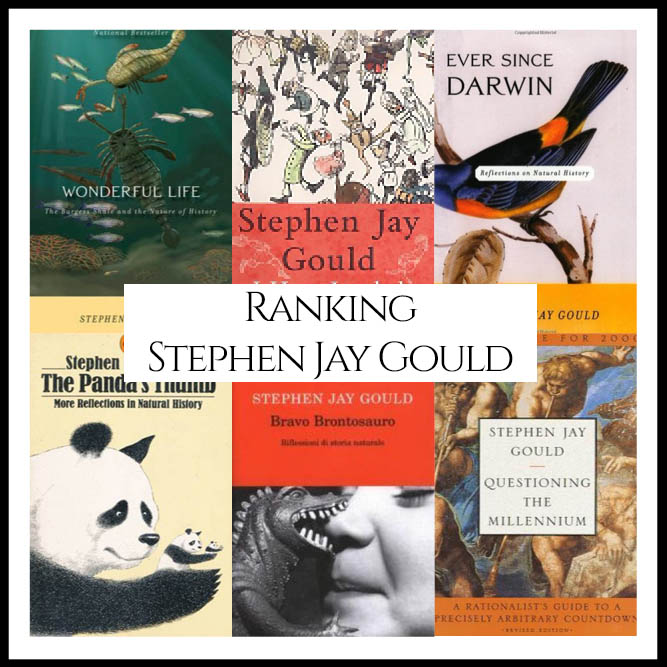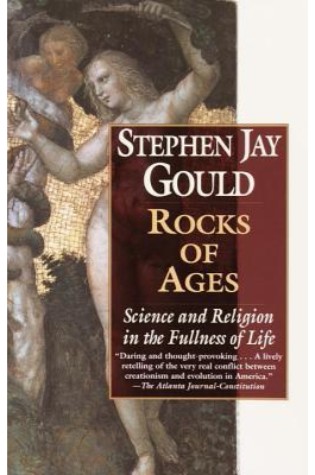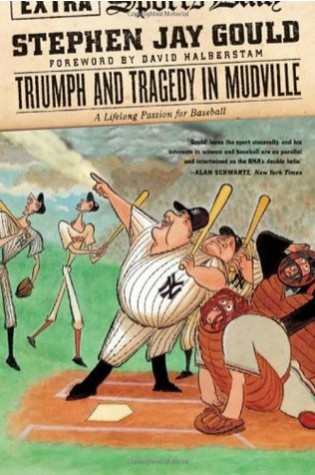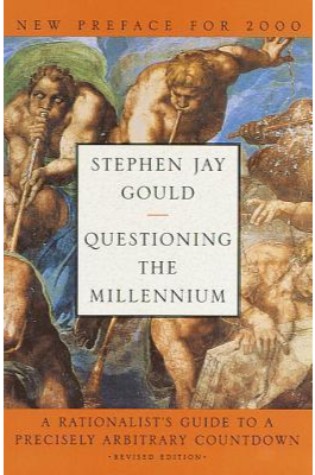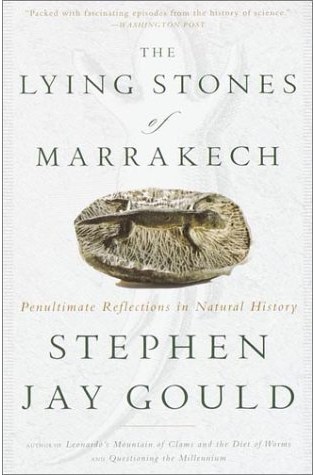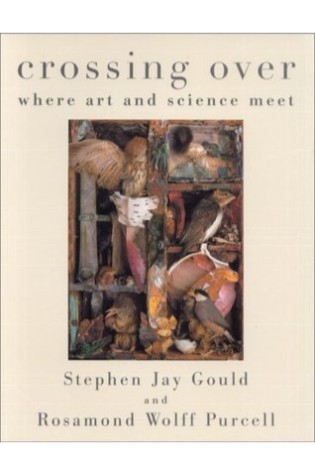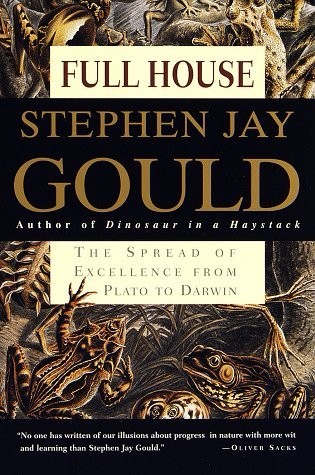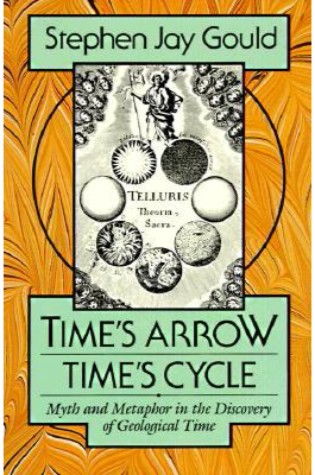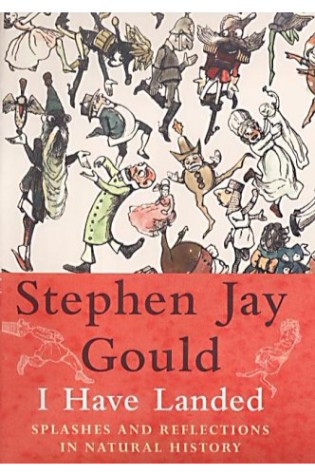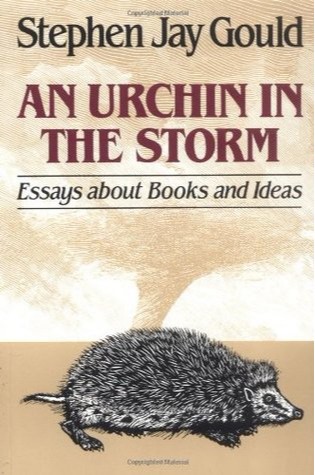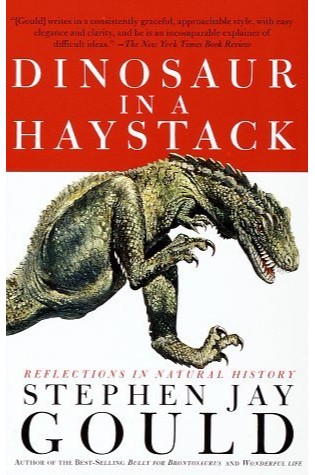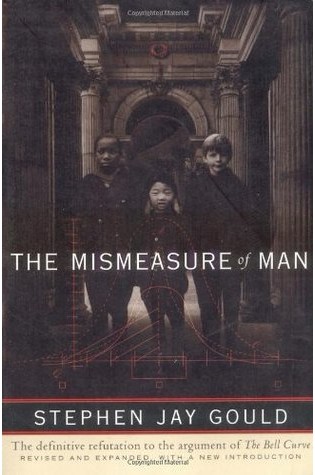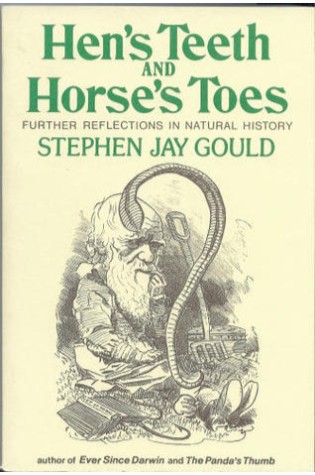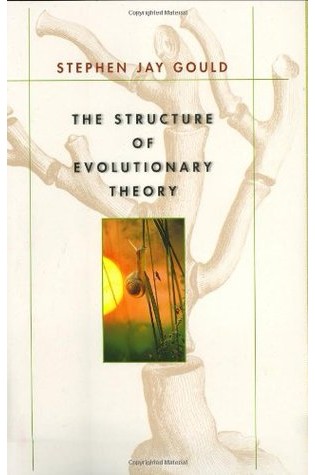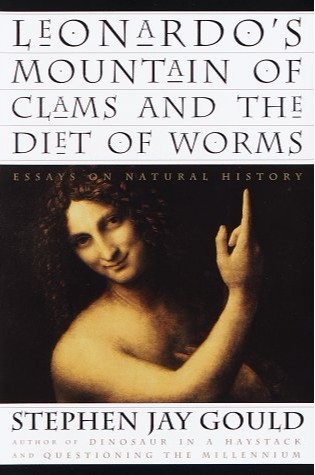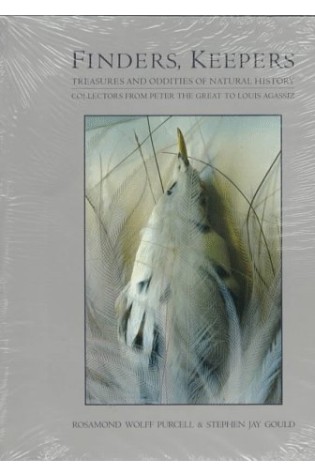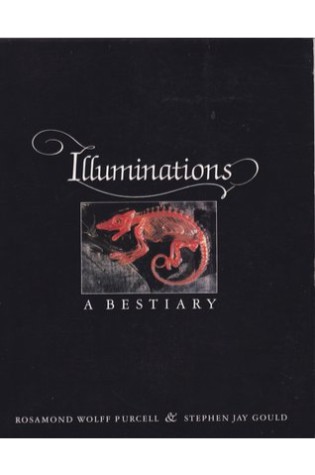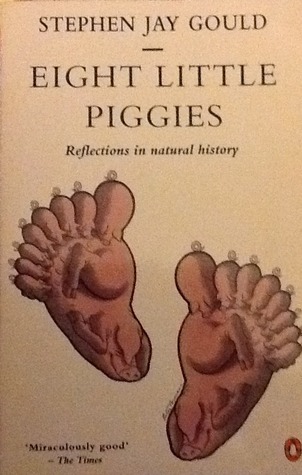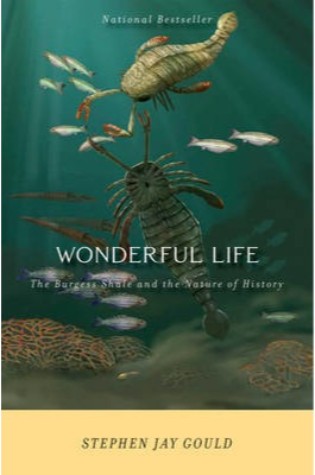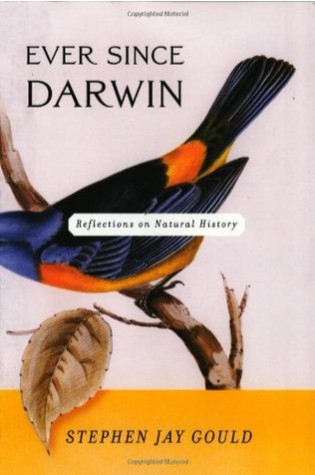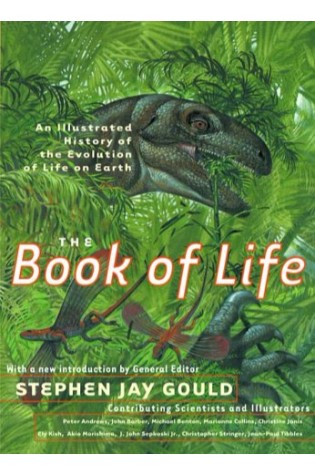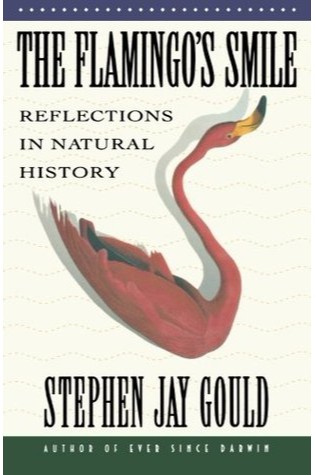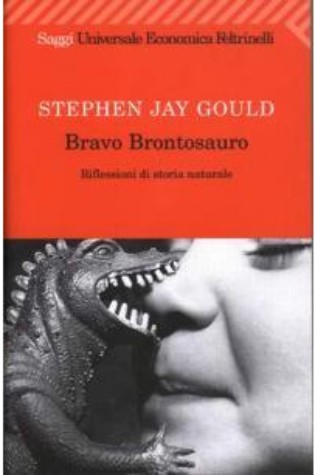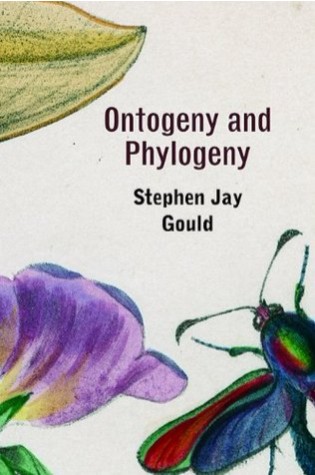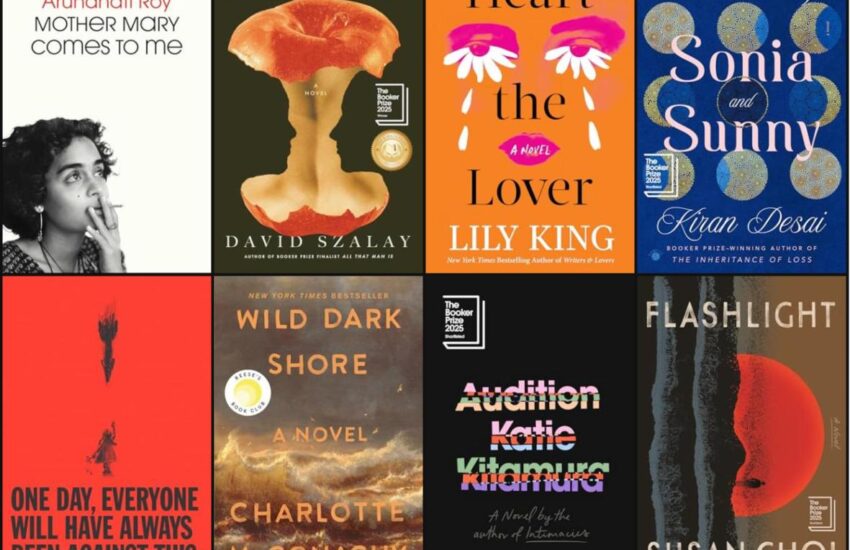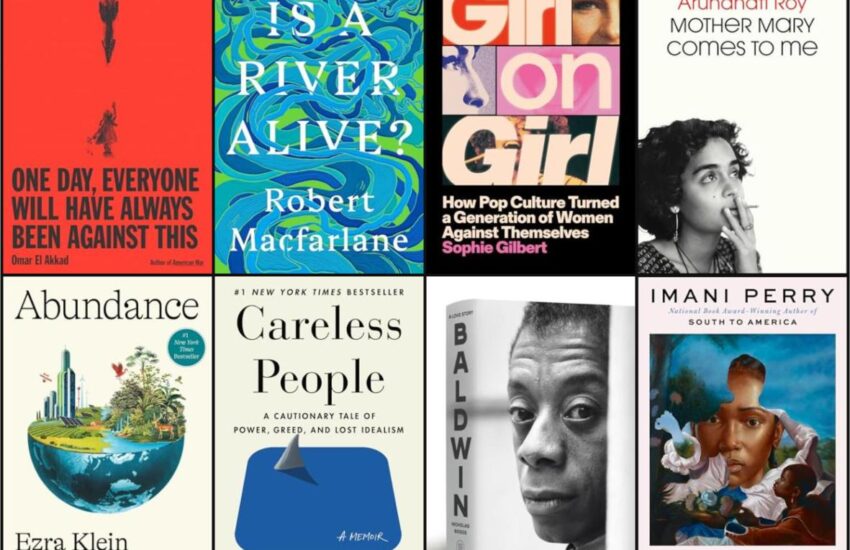Ranking Author Stephen Jay Gould’s Best Books (A Bibliography Countdown)
“What are Stephen Jay Gould’s Best Books?” We looked at all of Gould’s authored bibliography and ranked them against one another to answer that very question!
We took all of the books written by Stephen Jay Gould and looked at his Goodreads, Amazon, and LibraryThing scores, ranking them against one another to see which books came out on top. The books are ranked in our list below based on which titles have the highest overall score between all 3 review sites in comparison with all of the other books by the same author. The process isn’t super scientific and in reality, most books aren’t “better” than other books as much as they are just different. That being said, we do enjoy seeing where our favorites landed, and if you aren’t familiar with the author at all, the rankings can help you see what books might be best to start with.
The full ranking chart is also included below the countdown on the bottom of the page.
Happy Scrolling!
The Top Book’s Of Stephen Jay Gould
25 ) Rocks of Ages: Science and Religion in the Fullness of Life
Review Website Ranks:
- Goodreads: 25
- Amazon: 24
- LibraryThing: 23
“Writing with bracing intelligence and clarity, internationally renowned evolutionist and bestselling author Stephen Jay Gould sheds new light on a dilemma that has plagued thinking people since the Renaissance: the rift between science and religion. Instead of choosing them, Gould asks, why not opt for a golden mean that accords dignity and distinction to each realm?
In his distinctively elegant style, Gould offers a lucid, contemporary principle that allows science and religion to coexist peacefully in a position of respectful noninterference. Science defines the natural world; religion our moral world in recognition of their separate spheres of influence. In exploring this thought-provoking concept, Gould delves into the history of science, sketching affecting portraits of scientists and moral leaders wrestling with matters of faith and reason. Stories of seminal figures such as Galileo, Darwin, and Thomas Henry Huxley make vivid his argument that individuals and cultures must cultivate both a life of the spirit and a life of rational inquiry in order to experience the fullness of being human.”
24 ) The Hedgehog, the Fox, and the Magister’s Pox
Review Website Ranks:
- Goodreads: 24
- Amazon: 22
- LibraryThing: 21
In his final book, Gould offers a surprising and nuanced study of the complex relationship between our two great ways of knowing: science and the humanities, twin realms of knowledge that have been divided against each other for far too long.
23 ) Triumph and Tragedy in Mudville: A Lifelong Passion for Baseball
Review Website Ranks:
- Goodreads: 22
- Amazon: 18
- LibraryThing: 24
Science meets sport in this vibrant collection of baseball essays by the late evolutionary biologist.Among Stephen Jay Gould’s many gifts was his ability to write eloquently about baseball, his great passion. Through the years, the renowned paleontologist published numerous essays on the sport; these have now been collected in a volume alive with the candor and insight that characterized all of Gould’s writing. Here are his thoughts on the complexities of childhood streetball and the joys of opening day; tributes to Mickey Mantle, Babe Ruth, and lesser-knowns such as deaf-mute centerfielder “Dummy” Hoy; and a frank admission of the contradictions inherent in being a lifelong Yankees fan with Red Sox season tickets. Gould also deftly applies the tools of evolutionary theory to the demise of the .400 hitter, the Abner Doubleday creation myth, and the improbability of Joe DiMaggio’s 56-game hitting streak.
22 ) Questioning the Millennium: A Rationalist’s Guide to a Precisely Arbitrary Countdown
Review Website Ranks:
- Goodreads: 23
- Amazon: 13
- LibraryThing: 22
“In this beautiful inquiry into time and its milestones, he shares his interest and insights with his readers. Refreshingly reasoned, erudite, and absorbing, the book asks and answers the three major questions that define the approaching calendrical event:
First, what exactly is this concept of a millennium and how has its meaning shifted? How did the name for a future thousand year reign of Christ on earth get transferred to the passage of a secular period of a thousand years in current human history? “
21 ) The Lying Stones of Marrakech
Review Website Ranks:
- Goodreads: 17
- Amazon: 17
- LibraryThing: 20
In his ninth collection of essays, bestselling scientist Stephen Jay Gould once again offers his unmistakable perspective on natural history and the people who have tried to make sense of it. In tandem with the closing of the millennium, Gould is planning to bring down the curtain on his nearly thirty-year stint as a monthly essayist for Natural History magazine. This, then, is the next-to-last essay collection from one of the most acclaimed and widely read scientists of our time. In twenty-three essays, Gould presents the richness and fascination of the various lives that have fueled the enterprise of science and opened our eyes to a world of unexpected wonders.
20 ) Crossing Over: Where Art and Science Meet
Review Website Ranks:
- Goodreads: 20
- Amazon: 13
- LibraryThing: 17
“Crossing Over, the latest of three collaborations between scholar Stephen Jay Gould and artist Rosamond Wolff Purcell, brings together thought-provoking essays and uncannily beautiful photographs to disprove the popular notion that art and science exist in an antagonistic relationship. The essays and photographs collected here present art and science in conversation, rather than in opposition. As Gould writes in his preface, although the two disciplines may usually communicate in different dialects, when juxtaposed they strikingly reflect upon and enhance one another. Working together, Purcell’s photographs and Gould’s scientific musings speak to us about ourselves and our world in a hybrid language richer than either could command on its own.
In an essay on individuality, for instance, Gould looks through the lens of evolutionary theory to address the controversial issue of cloning and the often misguided fears it evokes. As a society that exalts the concept of the individual, Gould argues, we sometimes fail to recognize that clones walk among us. Identical twins represent “”the greatest of all challenges to our concept of individuality.”” Rosamond Purcell’s photograph depicting the famous Siamese conjoined twins Eng and Chang conveys an eerie feeling that cannot be captured in words.”
19 ) Full House: The Spread of Excellence From Plato to Darwin
Review Website Ranks:
- Goodreads: 16
- Amazon: 21
- LibraryThing: 13
Gould shows why a more accurate way of understanding our world is to look at a given subject within its own context, to see it as a part of a spectrum of variation and then to reconceptualize trends as expansion or contraction of this “full house” of variation, and not as the progress or degeneration of an average value, or single thing.
18 ) Time’s Arrow, Time’s Cycle
Review Website Ranks:
- Goodreads: 18
- Amazon: 3
- LibraryThing: 25
Gould’s major theme is the role of metaphor in the formulation and testing of scientific theories–in this case the insight provided by the oldest traditional dichotomy of Judeo-Christian thought: the directionality of time’s arrow or the immanence of time’s cycle. Gould follows these metaphors through these three great documents and shows how their influence, more than the empirical observation of rocks in the field, provoked the supposed discovery of deep time by Hutton and Lyell. Gould breaks through the traditional “cardboard” history of geological textbooks (the progressive march to truth inspired by more and better observations) by showing that Burnet, the villain of conventional accounts, was a rationalist (not a theologically driven miracle-monger) whose rich reconstruction of earth history emphasized the need for both time’s arrow (narrative history) and time’s cycle (immanent laws), while Hutton and Lyell, our traditional heroes, denied the richness of history by their exclusive focus upon time’s Arrow.
17 ) I Have Landed: The End of a Beginning in Natural History
Review Website Ranks:
- Goodreads: 18
- Amazon: 8
- LibraryThing: 18
Here is bestselling scientist Stephen Jay Gould’s tenth and final collection based on his remarkable series for Natural History magazine—exactly 300 consecutive essays, with never a month missed, published from 1974 to 2001. Both an intellectually thrilling journey into the nature of scientific discovery and the most personal book he has ever published, I Have Landed marks the end of a significant chapter in the career of one of the most acclaimed and widely read scientists of our time.
16 ) An Urchin in the Storm: Essays about Books and Ideas
Review Website Ranks:
- Goodreads: 21
- Amazon: 3
- LibraryThing: 18
Reviews books about pandas, scientific research, evolution, culture, geology, the origin of the mind, testing bias, genetics, and scientific frauds
15 ) Dinosaur in a Haystack
Review Website Ranks:
- Goodreads: 9
- Amazon: 15
- LibraryThing: 15
Award-winning, bestselling author, evolutionary biologist, and paleontologist Stephen Jay Gould takes the art of the essay to an unprecedented height of excellence in this vibrant new collection of writings on science and natural history. From fads to fungus, baseball to beeswax, Gould always circles back to the great themes of time, change, and history, carrying readers home to the centering theme of evolution.
14 ) The Mismeasure of Man
Review Website Ranks:
- Goodreads: 15
- Amazon: 18
- LibraryThing: 5
“When published in 1981, The Mismeasure of Man was immediately hailed as a masterwork, the ringing answer to those who would classify people, rank them according to their supposed genetic gifts and limits.
And yet the idea of innate limits―of biology as destiny―dies hard, as witness the attention devoted to The Bell Curve, whose arguments are here so effectively anticipated and thoroughly undermined by Stephen Jay Gould. In this edition Dr. Gould has written a substantial new introduction telling how and why he wrote the book and tracing the subsequent history of the controversy on innateness right through The Bell Curve. “
13 ) Hen’s Teeth and Horse’s Toes
Review Website Ranks:
- Goodreads: 11
- Amazon: 15
- LibraryThing: 9
Over a century after Darwin published the Origin of Species, Darwinian theory is in a “vibrantly healthy state,” writes Stephen Jay Gould, its most engaging and illuminating exponent. Exploring the “peculiar and mysterious particulars of nature,” Gould introduces the reader to some of the many and wonderful manifestations of evolutionary biology.
12 ) The Panda’s Thumb
Review Website Ranks:
- Goodreads: 9
- Amazon: 18
- LibraryThing: 7
“With sales of well over one million copies in North America alone, the commercial success of Gould’s books now matches their critical acclaim. The Panda’s Thumb will introduce a new generation of readers to this unique writer, who has taken the art of the scientific essay to new heights.
Were dinosaurs really dumber than lizards? Why, after all, are roughly the same number of men and women born into the world? What led the famous Dr. Down to his theory of mongolism, and its racist residue? What do the panda’s magical “”thumb”” and the sea turtle’s perilous migration tell us about imperfections that prove the evolutionary rule? The wonders and mysteries of evolutionary biology are elegantly explored in these and other essays by the celebrated natural history writer Stephen Jay Gould.”
11 ) The Structure of Evolutionary Theory
Review Website Ranks:
- Goodreads: 14
- Amazon: 11
- LibraryThing: 8
“The world’s most revered and eloquent interpreter of evolutionary ideas offers here a work of explanatory force unprecedented in our time–a landmark publication, both for its historical sweep and for its scientific vision.
With characteristic attention to detail, Stephen Jay Gould first describes the content and discusses the history and origins of the three core commitments of classical Darwinism: that natural selection works on organisms, not genes or species; that it is almost exclusively the mechanism of adaptive evolutionary change; and that these changes are incremental, not drastic. Next, he examines the three critiques that currently challenge this classic Darwinian edifice: that selection operates on multiple levels, from the gene to the group; that evolution proceeds by a variety of mechanisms, not just natural selection; and that causes operating at broader scales, including catastrophes, have figured prominently in the course of evolution.”
10 ) Leonardo’s Mountain of Clams and the Diet of Worms
Review Website Ranks:
- Goodreads: 13
- Amazon: 1
- LibraryThing: 16
In this collection, Gould consciously and unconventionally formulates a humanistic natural history, a consideration of how humans have learned to study and understand nature, rather than a history of nature itself. With his customary brilliance, Gould examines the puzzles and paradoxes great and small that build nature’s and humanity’s diversity and order. In affecting short biographies, he depicts how scholars grapple with problems of science and philosophy as he illuminates the interaction of the outer world with the unique human ability to struggle to understand the whys and wherefores of existence.
9 ) Finders, Keepers: Eight Collectors
Review Website Ranks:
- Goodreads: 2
- Amazon: 25
- LibraryThing: 1
“Most of us collect things, but seldom have entire collections been preserved.
A few that did survive have fallen, figuratively, into the clutches of two of America’s most innovative minds: photographer Rosamond Wolff Purcell and paleontologist Stephen Jay Gould. What these collections say about the collectors, and about human beings in general, is the subject of this strangely beautiful and rich compendium. Here are Purcell’s wonderfully exotic photographs of teeth and other human artifacts from the collection of Peter the Great; moles, pigs, and dogs from van Heurn’s many boxes of perfectly preserved skins; and all manner of preserved life from Rothschild’s Birds of Paradise to the fish of Agassiz. Here also is Gould at his best, delighting in the unusual and making connections to our own history and evolution that only the most fertile and whimsical mind could imagine – and that few will be able to resist. This is a book for those with a craving for beauty, knowledge, and a fascination with the unusual.”
8 ) Illuminations: A Bestiary
Review Website Ranks:
- Goodreads: 1
- Amazon: 23
- LibraryThing: 3
A startling, stunning, entertaining vision of the animal world past and present, with insights into its implications for us today. 69 full-color photographs and 4 black and white.
7 ) Eight Little Piggies
Review Website Ranks:
- Goodreads: 12
- Amazon: 3
- LibraryThing: 11
Among scientists who write, no one illuminates as well as Stephen Jay Gould doesthe wonderful workings of the natural world. Now in a new volume of collected essays―his sixth since Ever Since Darwin―Gould speaks of the importance of unbroken connections within our own lives and to our ancestralgenerations. Along with way, he opens to us the mysteries of fish tails, frog calls, and other matters, and shows once and for all why we must take notice when a seemingly insignificant creature is threatened, like the land snail Partula from Moorea, whose extinction he movingly relates.
6 ) Wonderful Life: The Burgess Shale and the Nature of History
Review Website Ranks:
- Goodreads: 7
- Amazon: 11
- LibraryThing: 4
High in the Canadian Rockies is a small limestone quarry formed 530 million years ago called the Burgess Shale. It hold the remains of an ancient sea where dozens of strange creatures lived―a forgotten corner of evolution preserved in awesome detail. In this book Stephen Jay Gould explores what the Burgess Shale tells us about evolution and the nature of history.
5 ) Ever Since Darwin
Review Website Ranks:
- Goodreads: 7
- Amazon: 8
- LibraryThing: 6
Ever Since Darwin, Stephen Jay Gould’s first book, has sold more than a quarter of a million copies. Like all succeeding collections by this unique writer, it brings the art of the scientific essay to unparalleled heights.
3 ) The Book of Life
Review Website Ranks:
- Goodreads: 3
- Amazon: 2
- LibraryThing: 14
The Book of Life uses an exemplary fusion of art and science to tell the story of life on earth. The text, under the editorship of Stephen Jay Gould, provides a thorough understanding of the latest research and is accompanied by paintings prepared especially for this book. Never before has our planet’s evolution been so clearly, so ingeniously explained. History is marked by disaster. The Book of Lifeexplains how mammals, having survived at least one of these disasters―the impact of a massive comet―luckily inherited the earth. Next came the rise of modern humans, who would shape the world as no creature has. As this fascinating history unfolds, gorgeous illustrations allow us to observe climate changes, tectonic plate movement, the spread of plant life, and the death of the dinosaurs. We discover the chains of animal survival, the causes and consequences of adaptation, and finally the environmental impact of human life. Color illustrations throughout.
3 ) The Flamingo’s Smile
Review Website Ranks:
- Goodreads: 4
- Amazon: 3
- LibraryThing: 12
Evolutionary theory in the theme that binds together these essays on such seemingly disparate topics as the feeding habits of flamingos, flowers and snails that change from male to female and sometimes back again, and the extinction from baseball of the .400 hitter
1 ) Bully for Brontosaurus
Review Website Ranks:
- Goodreads: 4
- Amazon: 3
- LibraryThing: 9
A collection of thirty-five essays–representing the best of the column “This View of Life” from “Natural History” magazine–focuses on the themes of evolution and of the innumerable oddities of nature
1 ) Ontogeny and Phylogeny
Review Website Ranks:
- Goodreads: 6
- Amazon: 8
- LibraryThing: 2
“Mr. Gould explores recapitulation as an idea that intrigued politicians and theologians as well as scientists. He shows that Haeckel’s hypothesis–that human fetuses with gill slits are, literally, tiny fish, exact replicas of their water-breathing ancestors–had an influence that extended beyond biology into education, criminology, psychoanalysis (Freud and Jung were devout recapitulationists), and racism. The theory of recapitulation, Gould argues, finally collapsed not from the weight of contrary data, but because the rise of Mendelian genetics rendered it untenable.
Turning to modern concepts, Gould demonstrates that, even though the whole subject of parallels between ontogeny and phylogeny fell into disrepute, it is still one of the great themes of evolutionary biology. Heterochrony–changes in developmental timing, producing parallels between ontogeny and phylogeny–is shown to be crucial to an understanding of gene regulation, the key to any rapprochement between molecular and evolutionary biology. Gould argues that the primary evolutionary value of heterochrony may lie in immediate ecological advantages for slow or rapid maturation, rather than in long-term changes of form, as all previous theories proclaimed.”
